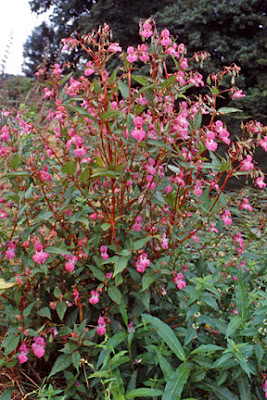Is your fridge starting to look bare as the week draws to a
close? Before your next trip to the supermarket why don’t you take a leaf out
of conservation biologist Joe Roman’s book and stock up on edible invasive
species instead?
The idea behind this campaign is simple: to protect our vulnerable ecosystem against invasives, we can proactively contribute towards reducing population sizes by eating them! This can even be done without your taste buds even noticing, for example trading the type of venison meat that you eat from Red or Roe deer to Sika deer. But if you’re feeling a little more adventurous you could even make a spicy curry using the Himalayan balsam (mentioned in the previous post).
If this whets your appetite and you’re intrigued to find out
more then check out these websites where some tasty recipes await you!
 |
| eattheinvaders.org |
 |
| invasivore.org |
I can certainly see the pros of
eating invasives, and feeling like you’re making a positive contribution
to biodiversity may bring a rewarding meal to the table. However personally, I am slightly apprehensive to promote
eating of invasive species without further evidence that it has causes a decline in the spread of species around the globe. I feel that a large proportion of
the population would have to be on board this idea in order for it to be a sustainable
method of population control. If countries gets an appetite for invasive
species, it will no doubt increase the demand for the species, and to ensure
that the supply meets the demand we will ultimately be doing a U-turn. Before we
know it we will be farming invasive species, defeating the whole object!
On that note I’ll leave you to ponder
whether you’ll be replacing Friday nights fish and chips with crayfish and
chips?

